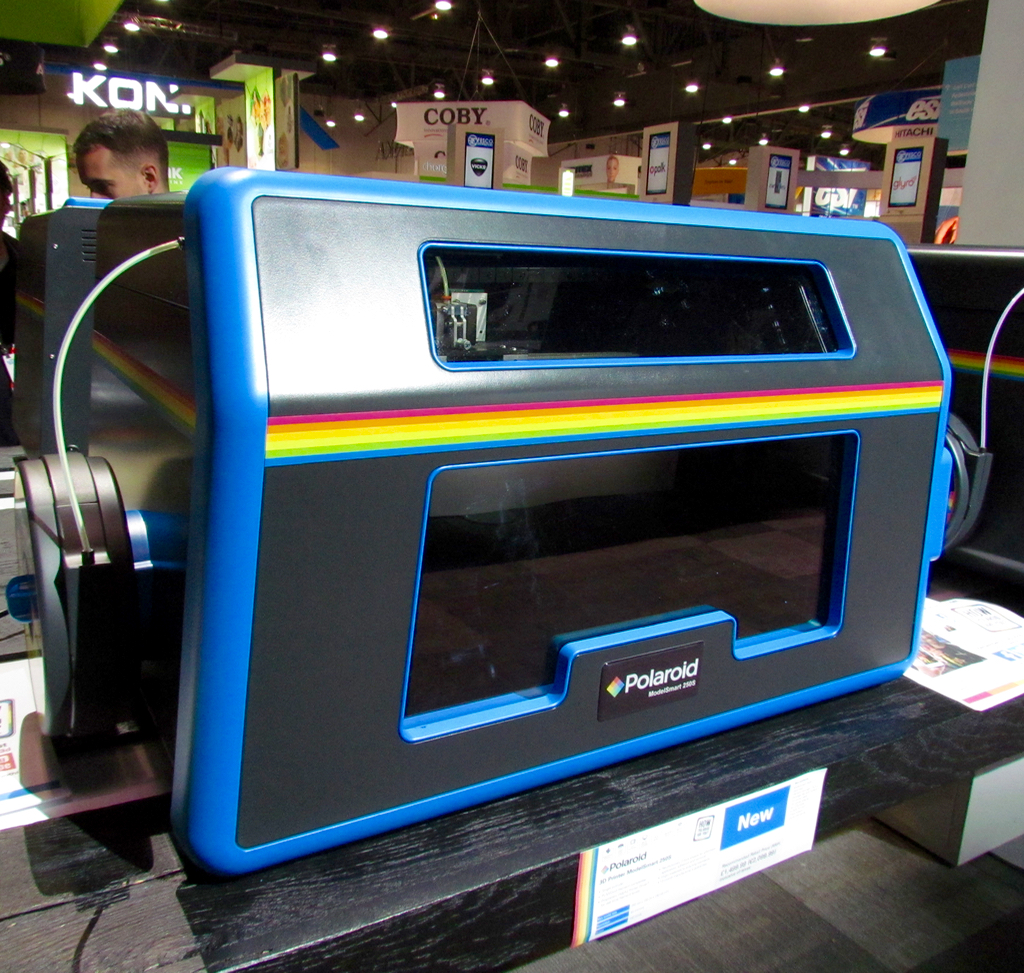
As we described previously, Polaroid launched a new desktop 3D printer. After some thought, we believe it will face significant challenges going forward.
The 250S, to be shipped in March, is intended to be marketed towards educators. At first, you’d think this would be a huge success, given the near limitless range of Polaroid’s massive sales, marketing and distribution organization. They have the ability to sell product virtually everywhere, and that’s something few other 3D printer manufacturers can boast.
However, while something can be sold, that doesn’t guarantee it will be sold. The problem we see is that the model 250S doesn’t seem to be keeping up with desktop 3D printer competitors already marketing to the education market.
These smaller 3D printer providers have faced a huge challenge over the past year: they’re running out of customers. While they’ve all grown very quickly by selling to interested hobbyists, most have run into a barrier when trying to grow past the DIY market into general consumers, simply because the machines are still too difficult for anyone to use and because it’s not clear why a consumer would use a 3D printer.
Their reaction to this is intelligent: select a market and make the machine more usable to already-present use patterns in that market. In the case of manufacturing, find a way to integrate into assembly lines. In the case of medical applications, find a way to integrate into surgical procedures.
But many of the desktop 3D printer manufacturers have selected Education as their target market, and competition is becoming fierce. Some have created libraries of educational 3D models specifically designed for printing; others have made whole curriculums of projects designed to educate through 3D printing and beyond. One manufacturer has even embedded multiple school projects directly into the machine!
Educators will buy these machines because they have confidence they will be able to use them in their work.
Unfortunately, it seems that Polaroid has not done any of this type of development for their offering, instead hoping that machine specifications will attract buyers. It won’t, not in today’s competitive education marketplace for 3D printers.
Even worse for Polaroid is the recent collapse of 3D Systems’ consumer line, Cubify, which sold significant numbers (many, many thousands) of machines to educational institutions. Cubify’s machines employed expensive proprietary filament cartridges, much like Polaroid employs. While Polaroid’s approach will certainly end up costing educators a lot more than other alternatives, the fact that thousands of educators are now stuck with Cubify equipment that will be increasingly difficult to find materials for, makes us think that the Polaroid option may not be strongly considered by educators.
We suspect it will tough going forward for Polaroid in the education market.

